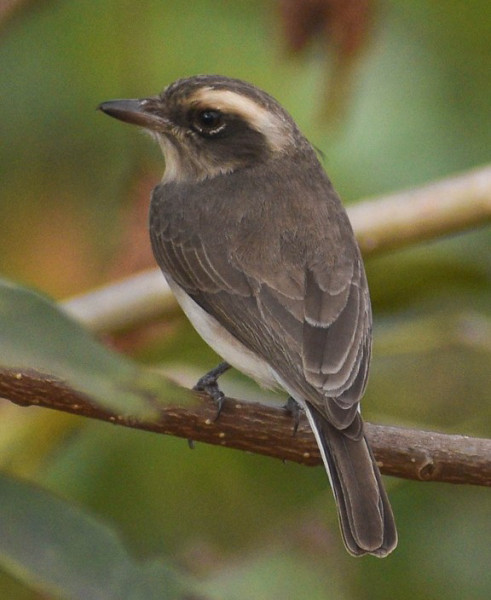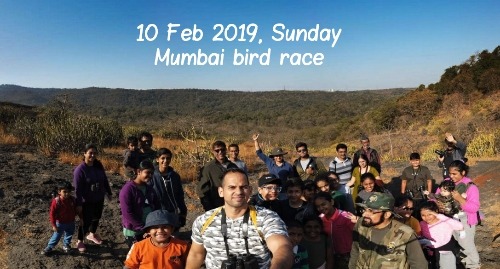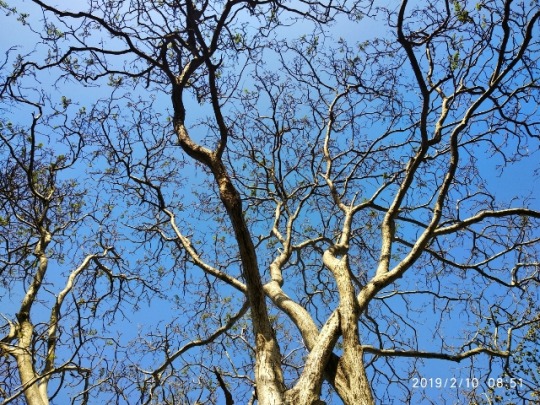#woodshrike
Explore tagged Tumblr posts
Text

October 11, 2024 - Sri Lanka Woodshrike (Tephrodornis affinis) Previously grouped with the Common Woodshrike as a single species, these birds in the vanga family are found in open wooded habitats in Sri Lanka. Though the details of their diet are unknown, they probably feed on insects and forage in pairs, small groups, or mixed-species flocks, like their close relatives. Breeding mostly between March and May, pairs likely build shallow cup-shaped nests.
#sri lanka woodshrike#woodshrike#vanga#tephrodornis affinis#bird#birds#illustration#art#woodland#birblr art
74 notes
·
View notes
Photo

A new variant has been added!
Common Woodshrike (Tephrodornis pondicerianus) © Omkar S Damle
It hatches from black, bright, brown, dark, dry, facial, large, outer, prominent, similar, strident, and white eggs.
squawkoverflow - the ultimate bird collecting game 🥚 hatch ❤️ collect 🤝 connect
2 notes
·
View notes
Text
"A medium-sized woodshrike with grayish-brown upperparts, black facial mask, white rump, and gray tail with white outer tail feathers. Bill strongly hooked, dark grayish-brown in color. Underparts white. Similar to Malabar Woodshrike and Large Woodshrike, but generally found in drier forests; also note prominent white supercilium. Usually found in dry forested areas and shrublands. Bright, fast-paced song starts out with two strident “wheeet” notes, followed by a descending series of shorter notes. Calls vary, but usually sound like isolated fragments of song."
-eBird

Conservation Status: LC

[2652/11080] Common woodshrike - Tephrodornis pondicerianus
Order: Passeriformes Suborder: Passeri Superfamily: Malaconotoidea Family: Vangidae (vangas)
Photo credit: Novelkumar M S via Macaulay Library
66 notes
·
View notes
Text
Bird census at Nagarahole Tiger Reserve: Birders record over 290 species including eight new
New Post has been published on https://petn.ws/Qm1pp
Bird census at Nagarahole Tiger Reserve: Birders record over 290 species including eight new

Mysore/Mysuru: The four-day bird census conducted at Nagarahole Tiger Reserve to study the bird diversity in various habitats, recorded over 290 species and eight new bird species in the National Park covering terrestrial, aquatic and aerial niches. Some of the rare species include Bar-headed Geese, Malabar Woodshrike, Redheaded Vultures and White-rumped Vultures, Ultramarine Flycatcher, Knob-billed […]
See full article at https://petn.ws/Qm1pp #BirdNews
0 notes
Photo

#CommonWoodShrike #Woodshrike #Birds #Birdphotography #Avianworld #Worldofbirds #BirdsofPrey #BirdsofPune #BirdsofIndianSubcontinent #Canon #7D #Canon7D #Canon70200 #Rawtherapee #GIMP (at Xrbia Hinjewadi) https://www.instagram.com/p/BsS-emlBOLU/?utm_source=ig_tumblr_share&igshid=164lsr992nsf6
#commonwoodshrike#woodshrike#birds#birdphotography#avianworld#worldofbirds#birdsofprey#birdsofpune#birdsofindiansubcontinent#canon#7d#canon7d#canon70200#rawtherapee#gimp
0 notes
Photo

Common Woodshrike 22nd February 2021 Kirthar National Park, Karachi. #birds_of_pakistan #birdsofsindh #BirdWatching #BirdPhotography #Jaffar_Hussain_Mandhro (at Karachi) https://www.instagram.com/p/CN59FiuAJWn/?igshid=8ob3y2r1rr7s
1 note
·
View note
Photo

Large Wood-shrike _ Tunnel Clay by mahi mahi 163 04 http://ift.tt/2AWaLdt
0 notes
Text
Mumbai Bird Race 2019










Mumbai Bird Race 2019:
30 of us saw 63 birds in Mumbai, Maharashtra, IN (19.093, 72.933) on Feb 10, 2019 from 8:07 AM. We traveled 29.67 miles (SGNP, Sewri, BPS, Powai) for 413 minutes (8 am to 6 pm) and reported all birds we saw.
Our check list:
6 Northern Shoveler
5 Greater Flamingo
300 Lesser Flamingo
1 Rock Pigeon (Feral Pigeon)
1 Laughing Dove
1 Greater Coucal
10 Asian Palm-Swift
1 Eurasian Moorhen
3 moorhen/coot/gallinule sp.
1 Kentish Plover
1 Bronze-winged Jacana
1 Common Sandpiper
1 Wood Sandpiper
1 Common Redshank
1 Brown-headed Gull
1 Common Tern
1 Painted Stork
1 cormorant sp.
1 Gray Heron
2 Purple Heron
1 Great Egret
1 Intermediate Egret
1 Little Egret
3 Western Reef-Heron
15 Indian Pond-Heron
2 Glossy Ibis
2 Black-headed Ibis
1 Black-winged Kite
1 Eurasian Marsh-Harrier
50 Black Kite
1 Brahminy Kite
1 Indian Gray Hornbill
1 Common Kingfisher
1 White-throated Kingfisher
4 Green Bee-eater
1 Coppersmith Barbet
1 Brown-headed Barbet
1 Rose-ringed Parakeet
1 Large/Common Woodshrike -- Sgnp
1 Indian Golden Oriole
1 Black Drongo
1 Ashy Drongo
2 Indian Paradise-Flycatcher
1 House Crow
1 Large-billed Crow
1 Barn Swallow
1 Red-vented Bulbul
1 Red-whiskered Bulbul
1 Clamorous Reed Warbler
1 Common Tailorbird
1 Jungle Babbler
1 Oriental Magpie-Robin
1 Tickell's Blue Flycatcher
1 Verditer Flycatcher
1 Pied Bushchat
1 Rosy Starling
3 Asian Pied Starling
1 Common Myna
1 Purple-rumped Sunbird
1 sunbird sp.
1 House Sparrow
1 Chestnut-shouldered Petronia
Number of Taxa: 61.
Check my Mumbai BirdRace in 2015 , 2022 , 2023 & 2024.
#Mumbai Bird Race#Bird Race#Birdwatching#Birding#bird's eye view#birds#birds adored#birdsinflight#angry birds#birds of prey
1 note
·
View note
Photo

Common Woodshrike (Tephrodornis pondicerianus) is dully ashy brown and has a large head with a strong hooked beak. They have a broad creamy brow above a dark cheek patch and white outer tail feathers contrasting with their dark tail. - Nakhatrana, Gujarat, India [2048x1365] [OC]
Source: https://bit.ly/3hFqxPr
0 notes
Text

June 28, 2022 - Large Woodshrike (Tephrodornis virgatus)
These woodshrikes are found in parts of South and Southeast Asia and southern China in lowland and hill forests. Foraging in the upper levels of the forest, often with mixed-species flocks, they eat large insects and some fruit, picking food from leaves and branches and capturing prey in short flights. Pairs build shallow saucer-shaped nests from grass stems, roots, twigs, tendrils, sometimes lichen, and spiderwebs.
84 notes
·
View notes
Photo

A new variant has been added!
Malabar Woodshrike (Tephrodornis sylvicola) © Uday Agashe
It hatches from black, brownish, common, dark, dry, endemic, humid, large, loud, pale, prominent, tropical, variable, western, white, and yellow eggs.
squawkoverflow - the ultimate bird collecting game 🥚 hatch ❤️ collect 🤝 connect
0 notes
Photo

Common Woodshrike Kheoni WLS, Dewas (Madhya Pradesh) 3.4.19 (at Kheoni wildlife sanctuary) https://www.instagram.com/swatma/p/Bv392LzjUXQ/?utm_source=ig_tumblr_share&igshid=erqtssmku23v
0 notes
Link
I highly recommend having this survey open on your browser, doing research, and filling it out slowly. Because, birds.
Palaeognaths
The first major division of modern birds (all the rest are Neognaths). Includes the Moa, Elephant Birds, Tinamous, Emus, Rheas, and Lithornithids. Casuarias and Struthio are ineligible, so don’t write in any Cassowaries or Ostriches.
Highlights include the Kiwi, an adorable small with a long snoot; Aepyornis, the largest Neornithean known; the Emu, who has one of the funniest ways of running; and Lithornis, an extinct flying member of the group.
Galloanserans
The earliest derived group of Neognaths. Includes Gastornis & the very similar Dromornithids, Geese, Screamers, Ducks, Swans, Curassows, Guans, Megapodes, Partridges, Quails, Junglefowl, and Pheasants. Genera Pavo and Gallus are ineligible, so don’t write in any peafowl or the four junglefowl under Gallus (which includes the chicken).
Highlights include Gastornis, which was actually a large herbivore rather than a super predator as thought; Vegavis, one of the earliest well-known Neornithes, being from the Cretaceous; Hooded Merganser, the duck with the very large crest that is quite impressive; and the Blue-billed Curassow, confirmed Friend and Curly Man.
Caprimulgiformes & Opisthocomiformes
These two groups aren’t actually closely related, I just had to stick Opisthocomiformes somewhere. Caprimulgiformes include Oilbirds, Owlet-Nightjars, Frogmouths, Nighthawks, and Nightjars. Opisthocomiformes include Hoatzin. Genera Nyctibius and Opisthocomus are ineligible, so no potoos or the only modern Hoatzin.
Highlights include the Satanic Nightjar, which looks exactly like you’d expect; the Tawny Frogmouth, who almost looks like a potoo if you squint; the Oilbird, which has some of the weirdest and spookiest eyes; and Hoazinoides, an extinct Hoatzin with feet like that of an owl.
Apodiformes
Swifts, Treeswifts, and Hummingbirds. Nothing is ineligible. All are precious.
Highlights include the Bee Hummingbird, the smallest dinosaur known to science; the Common Swift, which looks like a boomerang; Eocypselus, an early relative of all these groups; and anything of the genera Sappho and Lesbia, which are the best genus names I’ve ever heard of.
Columbaves
Cuckoos, Turacos, Bustards, Pigeons, Doves, Sandgrouse, and Mesites. Genus Columba is ineligible, so don’t write in any of the “typical pigeons.”
Highlights include the Dodo, which is not as dumb as we were lead to believe; the Bare-Faced Go-Away Bird, which represents Me at All Times; the Nicobar Pigeon, which has beautiful rainbow plumage; and the Kori Bustard, which has a really elegant neck and posture IMO.
Gruiformes
Cranes, Crakes, Rails, Limpkin, Trumpeters, Flufftails, Finfoots, and Sungrebes. Nothing is ineligible.
Highlights include the Whooping Crane, an endangered species with a distinctive call; the White-Spotted Flufftail, who has adorable spots on its butt; the Red-Legged Crake, which is red in lots of places besides its legs; and the Sungrebe, which has a nice blue cap on its head.
Mirandornithes & Charadriiformes
Flamingos, Grebes, Waders, Snipes, Sandpipers, Jacanas, Wanderers, Gulls, Skimmers, Terns, Puffins, Skuas, Plovers, Buttonquails, Thick-Knees, Sheathbills, Ibisbills, Avocets, Oystercatchers, and Lapwings. Nothing is ineligible.
Highlights include the Great Auk, an extinct large puffin that we as humans don’t deserve; the Ring-Billed Gull, whom I have a personal vendetta against; the Dovekie, a smol, adorable friend; and the Sanderling, one of the inspirations behind Pixar’s Piper.
Ardeae
Tropicbirds, Kagu, Sunbittern, Loons, Albatross, Petrels, Storkss, Boobies, Cormorants, Pelicans, Hamerkop, Ibises, Spoonbills, Herons, Egrets, and Penguins. The genus Balaeniceps is ineligible, so don’t write in the Shoebill.
Highlights include the Little Penguin, the smol adorable penguin of smol adorableness; the Least Bittern, who is indeed the Least Bittern; the Common Loon, against whom my partner Max (@plokool) has a personal vendetta; and the Emperor Penguin, which is the Pinnacle of Dinosaurian Evolution according to Thomas Holtz (well, okay, he said penguins in general were, but this is the emperor penguin, so...)
Accipitrimorphs
Vultures (both Old and New world), Ospreys, Hawks, Eagles, Kites. Genera Sagittarius and Gypaetus are ineligible, so don’t write in the Secretary Bird, or the Bearded Vulture. No, do not write in the Bearded Vulture, nor Lammergeier, nor Ossifrage. You will have wasted your vote. Do not do the thing. It doesn’t count.
Highlights include Haast’s Eagle, an eagle so large it hunted the Moa; the Harpy Eagle, which honestly when you see it if you aren’t convinced birds are dinosaurs there’s nothing more I can do; the Turkey Vulture, or as I like to call it, the Bare-Faced Come-Hither Bird; and the Red-Tailed Hawk, aka, that sound you hear when people try to ignore that Bald Eagles are actually huge dorks.
Strigiformes
Owls. Genus Tyto is ineligible, which is basically all barn owls and most of their close relatives, so just, don’t write that in.
Highlights include Palaeoglaux, one of the earliest derived forms and may have been diurnal; the Burrowing Owl, who likes to dig them holes; the Snowy Owl, aka Hedwig; and the Fearful Owl, who looks exactly like what you’d expect.
Coraciimorphs
Mousebirds, Cuckoo Roller, Trogons, Hornbills, Hoopoes, Rollers, Kingfishers, Woodpeckers, Toucans. Genus Dacelo is ineligible, which means no Kookaburras, none, do not write one in.
Highlights include Septencoracias, aka a Friend and Boy; the Hoopoe, aka the Most Jewish bird; the Resplendent Quetzal, which truly is magnificently colored; and the Keel-Billed Toucan, who just really loves fruit okay?
Falconiformes & Cariamiformes
Serimas, Terror Birds, Bathornithids, Caracaras, and Falcons. Genus Titanis is ineligible, as is Falco peregrinus, the peregrine falcon. Since most falcons are under Falco, the rest of the genus is eligible.
Highlights Include Phorusrhacos, one of the most Quintessential Terror Birds; the Red-Legged Seriema, who is just a very angry bird; the Pygmy Falcon, who is a Smol Ball of FURY; and the Northern Crested Caracara, who has distinctive purple-pinkish skin on its face.
Parrots
... Parrots. The Kakapo, genus Strigops, is ineligible.
Highlights include the Cockatiel, a common pet and soft friend; the African Grey Parrot, one of the smartest species of dinosaurs; Spix’s Macaw, a beautiful blue parrot on the brink of extinction; and the Mulga Parrot, a parrot with feathers that almost look like clay in certain lighting.
Passerines
Perching birds. The vast majority of birds. Most birds are in this group. I am so sorry. Includes, but is not limited to, Pittas, Broadbills, Cotingas, Sharpbills, Flycatchers, Antthrushes, Ovenbirds, Lyrebirds, Scrub-birds, Bowerbirds, Honeyeaters, Fairywrens, Whistlers, Orioles, Vireos, Birds of Paradise, Jays, Satinbirds, Wattlebirds, Rockfowl, Tits, Chickadees, Larks, Nicators, Wren-Babblers, Swallows, Warblers, Babblers, Waxwings, Treecreepers, Thrushes, Oxpeckers, Mockingbirds, Sugarbirds, Sunbirds, Sparrows, Finches, Buntings, Cardinals, Whistlers, Woodshrikes.
The genus Corvus is ineligible, which is a good portion of crows and ravens, so don’t write them in. There are so many passerines to choose from, you can pick another one.
It’s, nearly impossible to pick four highlights, but here we go. Highlights include the Blue Jay, one of the most famous and beautiful perching birds; the Superb Bird of Paradise, who has one of the most spectacular mating dances of birds; the Great Tit, who truly is an amazing soft sphere of birb; and the House Sparrow, a feature of almost every major city and one of the dinosaurs often used to define the clade.
Good luck. Have fun. Voting will close February 24 (possibly earlier if we get enough votes in).
#birds#dinosaurs#dinosaur march madness#dmm2017#palaeoblr#birblr#neornithes#this is Insanity#I am so sorry#maybe one year we should just have it be only birds#the Bird Year#an entire quadrant would be passerines#John and I came up with an idea to make this easier next year and I hope it works
209 notes
·
View notes
Photo

Common Woodshrike - Tephrodornis pondicerianus Local Name : Keroula/ Desi Latora Bare Parts : Iris greenish brown. Bill horny brown,darker on culmen and tip.Legs and feet are horny brown. Features : Plane greyish brown birs, with prominent white supercilium and dark steips below eyes ,from lores to ear -converts. Tail square ,and feather white . © VIPs #birdsofinstagram #birds #instagram #instabirds #instabirders #mptourism #mpforest #bestbirds #bestshot #amazing #forest #madhyapradesh #sonyalpha #sony #munia #allmight_birds #feathers_perfection #birdsofindia #eagle #bestbirdshots #wetlands #amazing_longexpo #clicks #landscapephotography #colours #natures #Cic_best #click_n_post #click__n__share #sanctuaryasia @indianwildlifeofficial @wildlifeindia @wildlifeplanet @world_wildlife @wildlife.hd @wildlifefriend @wildlifeenthusiasts (at Madhya Pradesh) https://www.instagram.com/p/BoCgPsthar6/?utm_source=ig_tumblr_share&igshid=9hoitj9mrd77
#birdsofinstagram#birds#instagram#instabirds#instabirders#mptourism#mpforest#bestbirds#bestshot#amazing#forest#madhyapradesh#sonyalpha#sony#munia#allmight_birds#feathers_perfection#birdsofindia#eagle#bestbirdshots#wetlands#amazing_longexpo#clicks#landscapephotography#colours#natures#cic_best#click_n_post#click__n__share#sanctuaryasia
0 notes
Photo

Common Woodshrike (Tephrodornis pondicerianus) 22nd February 2021 @ Khar Center, Karachi, Sindh Pakistan #BirdsOfSindh #BirdsOfPakistan #BirdsSeenIn2021 #birdwatching #birdphotography (at Karachi, Pakistan) https://www.instagram.com/p/CLtReyUgZuV/?igshid=g4e9gjjlaczq
1 note
·
View note
Text
Beginning Of the New Adventure-Dharamshala Mcleodganj Triund Trip
Here and there, mountains call you. When they do why you even consider anything, Just Go and discover the peace lies there. Those ideas of going there increment your speed of sack pressing and this time the movement goal was Dharamshala Mcleodganj Triund trip.
To start with choose what you’re wanting to do in McLeod Ganj. Would you go on a trek? Would you lean toward investigating the birdlife? Or on the other hand, do you wanna do plain touring and investigate the place?
When you recognize what – discover what the best seasons for these are.
Let’s begin the adventure in loaded with energy from Delhi and made this fervour till the finish of the excursion.
You could look at for encounters, for example, these –
The quiet Kareri Lake is a frigid lake settled high in the Dhauladhars. Generally ignored, this trail goes through stretches of calm woodlands along the Kareri stream and over lavish fields fragrant with wildflowers. As a couple of voyagers come here, the locale is for the most part unexplored. The Kareri Lake sits at the base of the Minkiani and Bleni Passes. The region presents abundant trekking open doors for the brave soul.
Favored Season : April – June, October – November
Triund Hill and Indrahar Pass Trek, Himachal Pradesh 3N/4D
Situated close McLeodganj, Triund Hill, 2842 m, lies on one of the significant courses utilized by the Gaddis for their regular relocation from the upper parts of Chamba and Kangra to the fields of the Kangra valley. The trail strings it route over rough outcrops and through woods and glades swarming with wildflowers and winged animals. The frigid Dhauladhars ascend gladly before us. Enchanting perspectives of the Kangra Valley can be had from on the slope. The course climbs assist tough to the breeze cleared Indrahar Pass through Illaqa before sliding back to McLeodganj.
Favored Season : April – June, October – November
Dharamsala, Himachal Pradesh: Birding and Nature Treks 3N/4D
Dharamsala is a slope station situated in the Kangra region of Himachal Pradesh. Favored with oak and coniferous backwoods, this city has a rich living space for birdlife. Lying in the upper ranges of the Kangra Valley, this elevated region is a prevalent goal among birdwatchers and travelers alike. A heaven of birding spots (McLeod Ganj, Naddi-Guna, Bhated waterway), Dharamsala brags a rich blend of nearby and transitory winged animals, for example, Yellow-footed Green-pigeon, Common Woodshrike, Bay-upheld and Long-followed Shrike, White-eared Bulbul, Red-breasted and Taiga Flycatcher, Indian Gray Hornbill, Yellow-delegated and Indian Pygmy Woodpeckers and that’s only the tip of the iceberg. You can enjoy all these with yoga trip packages in Himalaya.
Features Of this trip
Birding in the elevated woodlands of McLeod Ganj
Climbing through rich woodland trails to birding spots at Naddi and Galu
Rich birdlife of high height Pheasants, Tree creepers, Red-breasted Flycatcher, Long-followed Shrike and that’s only the tip of the iceberg
Favored Season : April – June, October – November
The post Beginning Of the New Adventure-Dharamshala Mcleodganj Triund Trip appeared first on Acchajee Blog.
from Shopping Tips https://blog.acchajee.com/beginning-new-adventure-dharamshala-mcleodganj-triund-trip/
0 notes